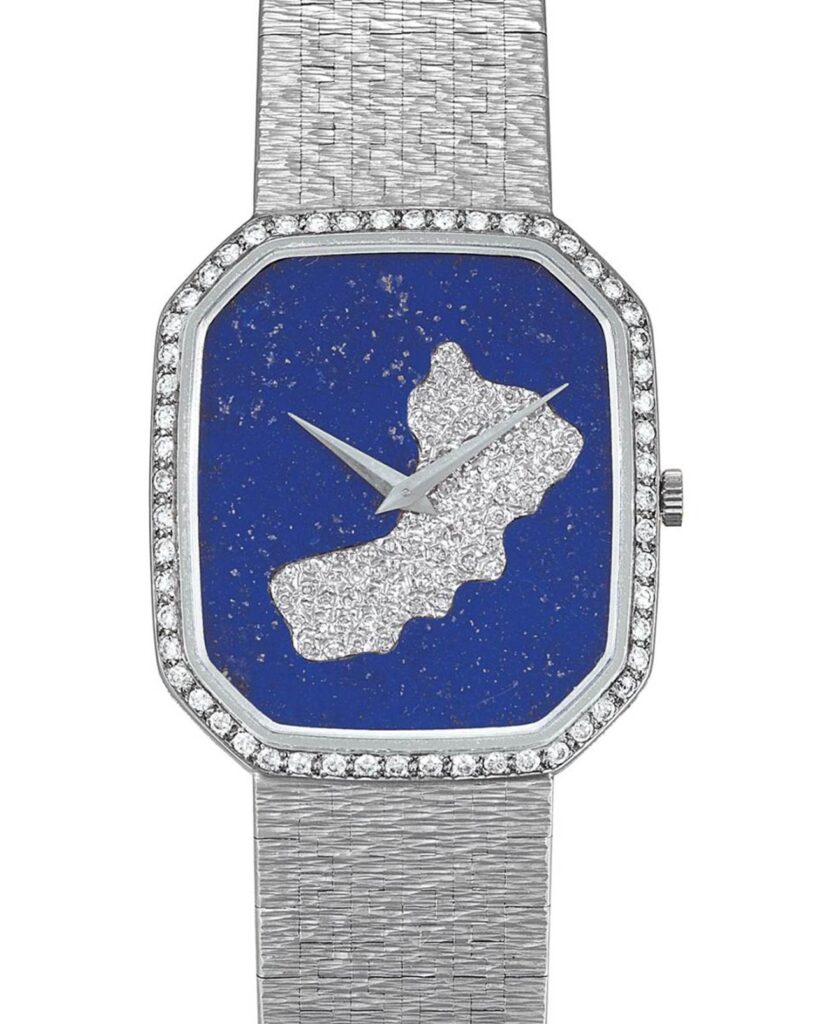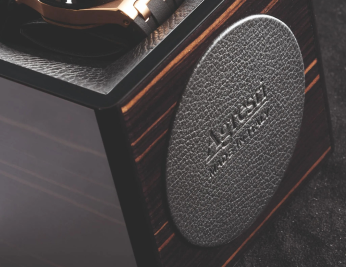It all begins at a specific point on earth, in the mountains of Badakhshan in northeastern Afghanistan. It is a rugged, isolated place that guards-protected by five-thousand-meter-high mountain passes-the ancient mines of Sar-e-Sang. Here, among the peaks of the Hindu Kush, the purest lapis lazuli , among the rarest and most coveted gems in the world, has been mined for more than seven thousand years. A saturated, deep blue with faint golden inclusions that shine like bright stars in the night sky. It is rare and fragile, difficult to mine and even more difficult to work.
Geologically a metamorphic rock composed of lazurite, calcite and pyrite, it shows up in opaque slabs a few meters thick, drawing midnight blue drapes in the whiteness of Afghan marble. It is the result of the circulation of deep hydrothermal fluids rich in sodium, sulfur and chlorine during the formation of the mountain ranges.

It is lazurite (from the Persian lazhuward or from the Arabic azul, blue) that gives it its characteristic hue, while calcite modulates its whitish veins and pyrite adds those bronze-colored sparkles reminiscent of the celestial vault quilted with stars. The perfect combination-a uniform, saturated blue with minimal traces of white and tiny inclusions of pyrite-is extremely rare and therefore extremely valuable.
From here, and a few other very rare deposits-in the Andes of Chile, China, and Pakistan-each block is still hand-selected, each slab cut with almost ritualistic care.

The Standard of Ur, circa 2500 B.C., preserved in the British Museum in London. It consists of four inlaid wooden panels, in which lapis lazuli, shells, limestone and mother-of-pearl are set.
From these mineral veins, lapis lazuli took many forms in antiquity: it was an amulet for the pharaohs, a royal seal for the Assyrians, a stone of deities and the sacred for the Sumerians. Found set on rings with engraved motifs, it was ornament for the Etruscans and a symbol of knowledge and truth for the Greeks and Romans. The stone of power, but also of contemplation.

Left, Tutankhamun’s funerary mask, gold and lapis lazuli, ca. 1323 BCE. Right, Tutankhamun’s treasure made of gold, lapis lazuli and semiprecious stones, depicting the solar disk (Ra), scarab (kheperu) and crescent (Neb), forming Tutankhamun’s name Neb-kheperu-ra.
The princely pomp of ultramarine blue
In the Italian Renaissance, art masters discovered how to turn it into a pictorial pigment of rare beauty, and one of the most spectacular collections of lapis lazuli objects in all of 15th-century Europe was born at the Medici court. Reduced to powder, washed and kneaded with water, oils and resins, filtered and purified, lapis lazuli gave birth to the rarest and most luminous pigment ever known: ultramarine. For from across the seas it arrived, via the routes connecting Venice to the East, more expensive than gold.
The complex and laborious process made it a luxury reserved for the most important and prestigious works of art-among them, Michelangelo’s Last Judgment . Chemical analysis of pigments in the Sistine Chapel confirmed the presence of natural lazurite in several areas, especially in the skies and in the robes of Christ and the Virgin, confirming that Michelangelo chose to employ it in the brightest spots, where natural light would enhance the depth of color, substituting the very expensive ultramarine for less valuable alternatives for non-sacred figures.

Michelangelo Buonarroti, The Last Judgment, 1536-1541, Sistine Chapel, Vatican City.
In art, from the 15th century onward, it remained a privilege of the sacred-reserved for Christ, the figure of the Virgin, Heaven, and divine transcendence. Power, wealth, prestige. A symbol of devotion even before simple beauty, in the hands of the

Johannes Vermeer, Girl with a Pearl Earring, ca. 1665, oil on canvas, Mauritshuis, The Hague.
It was the synthetic alternative, created by French chemist Jean-Baptiste Guimet in 1826, that made that vibrant blue accessible to artists without compromising its quality. Finally democratic, it lost some of its mystery, however.
A century later, Yves Klein restored the pigment’s sacred aura, returning it to the dimension of the absolute. By mixing synthetic pigment, chemically identical to its natural counterpart, with a colorless binder he patented (Rhodopas M60A resin), Klein createdInternational Klein Blue (IKB), an absolute blue that seems to exist on canvas without weight or surface. “Through color, I feel a total identification with space; I am truly free,” the artist wrote. A blue again suspended between the material and the immaterial, which thus becomes a space other, capable of dissolving the boundary between observer and object, between matter and thought.

Left Yves Klein, California (IKB 71), 1961. Dry pigment and synthetic resin on canvas mounted on panel, 196 × 421 cm. The French artist’s largest monochrome to date in private hands, it sold at Christie’s in Paris on October 23, 2025 for €18,375,000 ©Christie’s Images Limited 2025. Left Yves Klein in Düsseldorf, Germany, February 1961, during the filming of the documentary
Lapis lazuli: the fragile stone
Today, lapis lazuli continues to be rare, but for different reasons. Afghan mines remain the main source, but conflict, logistical restrictions and patchy control make supply complex. Other sources-Chile, Russia, Pakistan-produce lighter or less pure variants that rarely achieve the saturation and color density of Afghan blue.

Cutting stones, finishing a lapis lazuli pattern. ©Van Cleef & Arpels.
Its rarity is not only in extraction: the material’s fragility, difficulty in cutting and polishing, and sensitivity to heat and pressure make it a complex material to work with. It is a stone that admits no shortcuts: it requires time, skilled hands and age-old patience. Fragility is part of its nature; indulging it, an art few possess.
The fascination of lapis lazuli in watchmaking

Piaget yellow gold watch-bracelet with lapis lazuli, sapphires and diamond dial. Sold by Phillips in 2016. ©Phillips.
In watchmaking, lapis lazuli has traveled diverse and fascinating trajectories, from the opulence of jewelry to the more calibrated presence of contemporary geometric dials.
In the 1970s, Piaget is among the first Maison to experiment with the use of semi-precious stones for wristwatches. These are often yellow gold models, in which thin slabs of stone inaugurate a powerful new vocabulary that makes irregularity its strength. Elegant, essential, and almost always without indexes, they are designed to be powered by the famous ultra-flat calibres, testifying to a sensibility that knows how to gracefully mix jewelry and watchmaking, in a whole new game of alternations that features carnelian, malachite, onyx, turquoise, and above all, lapis lazuli. Each slab is cut by hand: fragile, unpredictable, unique. Like the one set in Reference 9755, in white gold and diamonds, which resembles the nebulous mass of the Milky Way.

Piaget Ref. 9795, with 18kt white gold case and bracelet, diamond-set bezel, lapis lazuli dial, and manual caliber 9P2. Made on commission for the Sultanate of Oman. ©Christie’s .
To the same period belong a number of Rolex Datejust and Day-Date with lapis lazuli dials, intended for a very small clientele: the vintage references 18038, 18238 and 16018 in yellow or white gold are among the most desired by collectors today.

A Rolex Day-Date Ref. 18038, 18kt yellow gold President case and bracelet, mounts a lapis lazuli dial without hour markers and gold-framed day and date window, with automatic caliber 3055 movement. Late 1970s.
In the 1980s and 1990s, thanks to Chopard and Cartier, lapis lazuli entered into dialogue with diamonds, gold, extravagant or delicate cases, for a more accomplished, soft or sumptuous decorative language.

On the right the Cartier Pasha Ref. 1023 With lapis lazuli dial with removable diamond grid. On the left, one Chopard Ref. 20764, 18kt white gold, diamonds and lapis lazuli.
With Vacheron Constantin today he blends enamels, engravings and miniatures for his Métiers d’Art (and the very complicated La Quête du Temps), in a liturgy of ancient knowledge. Audermars Piguet, on the other hand, recounts the versatility of stone, combining it, in some versions, with the steel of Genta’s sports case for a meeting of two apparent opposites: the primacy of technical form and the irregularity of natural material.

Left, an Audermars Piguet Royal Oak 56346ST, with stainless steel case and bracelet and diamond-set bezel and hour markers, circa 1994. At right, a Vacheron Constantin 7391 with an 18kt white gold intrecciato-pattern case and bracelet.
In recent years the stone is experiencing a new youth. Piaget continues to use it in Black Tie and Altiplano; Hermès has chosen it for some limited editions of theArceau; Bulgari and Dior play on the contrast between mineral opacity and metallic luster. While Zenith this year dresses a Maison classic, the Chronomaster Original Triple Calendar, in blue, Gerald Charles is celebrating its 25th anniversary with a new Maestro 2.0 Ultra-Thin, which embeds a slab of lapis lazuli just 0.55mm thin in its irregular case.

At right, the Zenith Chronomaster Original Triple Calendar with lapis lazuli dial. At left, the Bulgari Divas’ Dream with gold bezel and fan elements set with brilliant-cut diamonds and lapis lazuli dial.
There is, in this return, something deeply cultural: a rediscovery of imperfection, of natural beauty, even when it is fragile. And it is not unpredictability that is scary. Unique and imperfect by nature, the bluest stone in the world knows no replication.
Visit our Youtube channel to experience the best of the world of watchmaking firsthand.
For all real-time updates follow us on Instagram.












